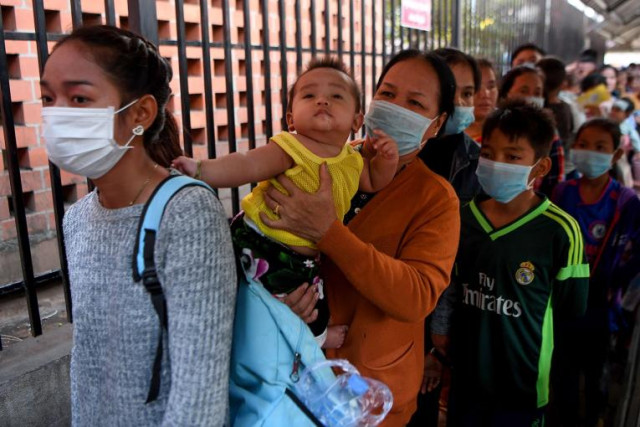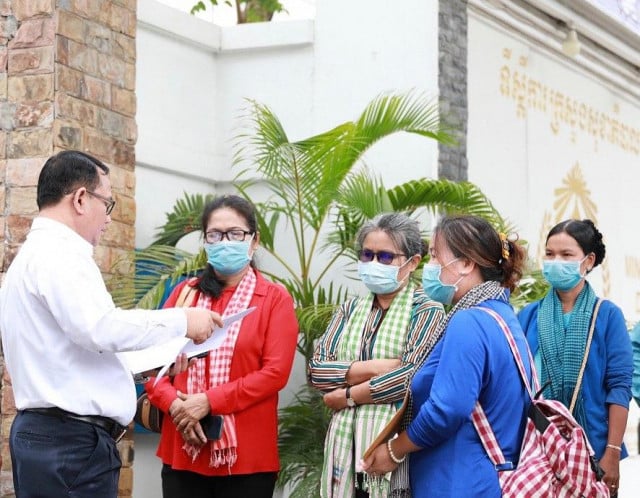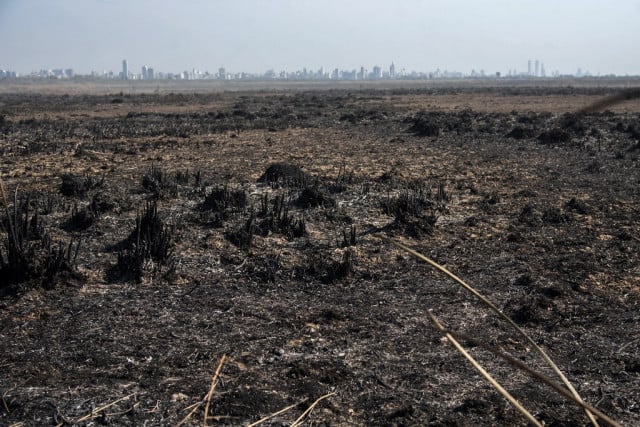Air Pollution Exposed as Child Killer

- By Phoung Vantha
- August 28, 2023 11:56 AM
PHNOM PENH – Nearly one in five deaths among Cambodian children under five is attributable to air pollution, UNICEF says after the country’s first Children’s Environmental Health Assessment.
The assessment, conducted by the Ministry of Health in collaboration with UNICEF, highlights the major environmental health risks children face, including water and food contamination, toxic metals, pesticides and hazardous waste.
Key findings and recommendations were presented at a workshop in Phnom Penh on Aug. 25, organized by the ministry.
This effort involved over 29 departments at national and sub-national level, including the ministries of Health, Environment, Mines and Energy, Agriculture, Forestry and Fisheries, and Industry, Science, Technology and Innovation.
Action by all actors, including the government, development partners, private sector, academic institutions, and civil society, was needed to reduce environmental health risks, especially for children, the assessment said.
Kol Hero, director of the Preventive Medicine Department of the Ministry of Health, said the negative health impacts on children due to increasing environmental risks and climate change factors cannot be ignored.
“Urgent collective action and more investment is needed to tackle these issues and protect our children," he said.
“This assessment will be a valuable resource for all stakeholders that are committed towards building a healthier, cleaner, and more sustainable environment for our children and future generations.”
Key recommendations from the assessment include: strengthening policies, regulations, and their enforcement to prevent and control the exposure of pollutants and contaminants; enhancing the capacity of healthcare professionals to address environmental health issues; promoting public awareness, community engagement, and the engagement of youth on climate change and environmental issues; as well as conducting further research and improving monitoring and surveillance systems for environmental health.
The UN Environment Program says that in Cambodia air pollution has come historically from wood and charcoal burning, agricultural fires and the incineration of waste.
“But as it develops, Cambodia is facing a wave of urban pollution. Recent research by UNEP shows that the largest sources of pollution in Cambodia today are transport, electricity generation, industry and residential development.”
According to the IQAir website, the concentration in Phnom Penh of the PM2.5 key indicator is currently 3.6 times the WHO annual air quality guideline value.
Will Parks, UNICEF representative in Cambodia, said children are now more exposed than ever to intense and destructive environmental hazards that jeopardize their fundamental rights, including their right to survive and thrive.
“The climate crisis is a child rights crisis,” he said.
“These early shocks in life diminish children’s potential to be a future generation of leaders and contributors to their country’s economy and prosperity. The more we understand the situation, the more we can advocate and act urgently to support the most vulnerable communities.”
Climate change and environmental degradation were disproportionally threatening children’s survival, health, education, protection and well-being.
The global rise of cancer, diabetes, neurodevelopmental disorders, and asthma has been accompanied by a surge in air pollution, e-waste, and the use of harmful chemicals in everyday products like plastics, food, electronics, toys and skin creams.
UNICEF estimates that three hundred million children globally live in areas where the toxicity levels of the air are six times higher than international guidelines.
The World Health Organization estimates that more than a quarter of deaths among children under five years can be prevented by addressing environmental risks.















